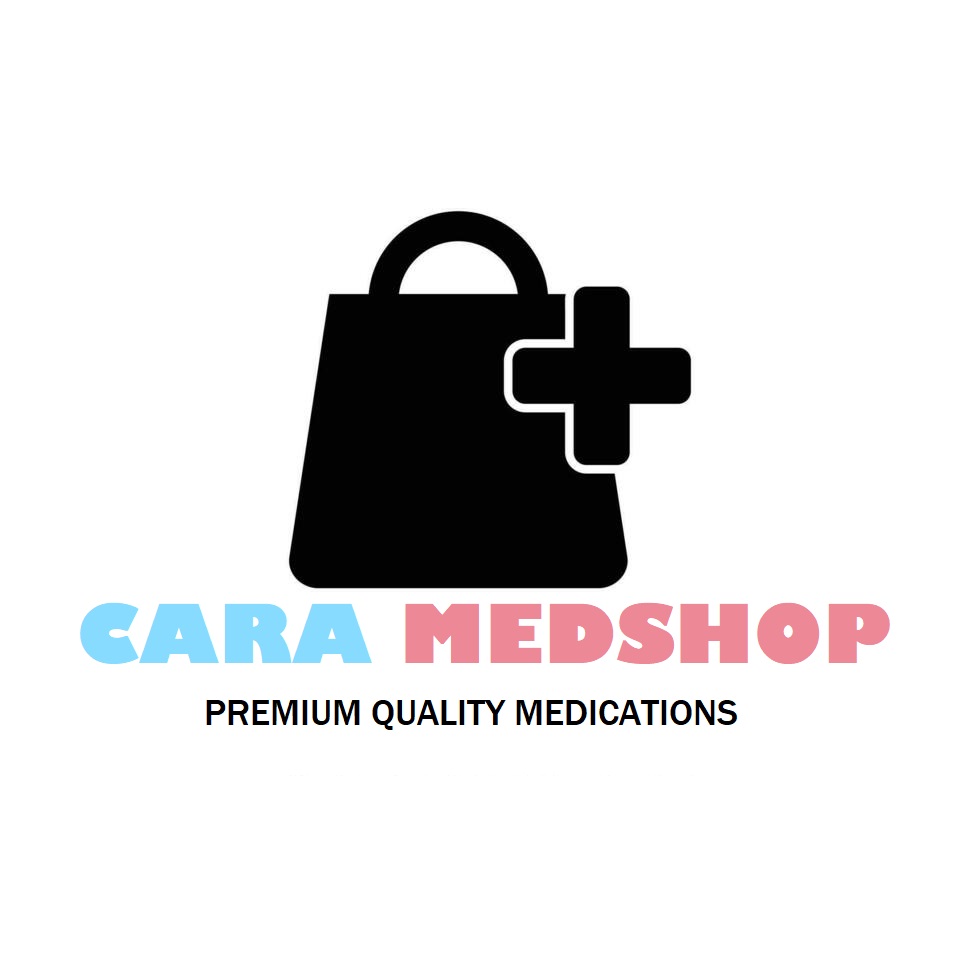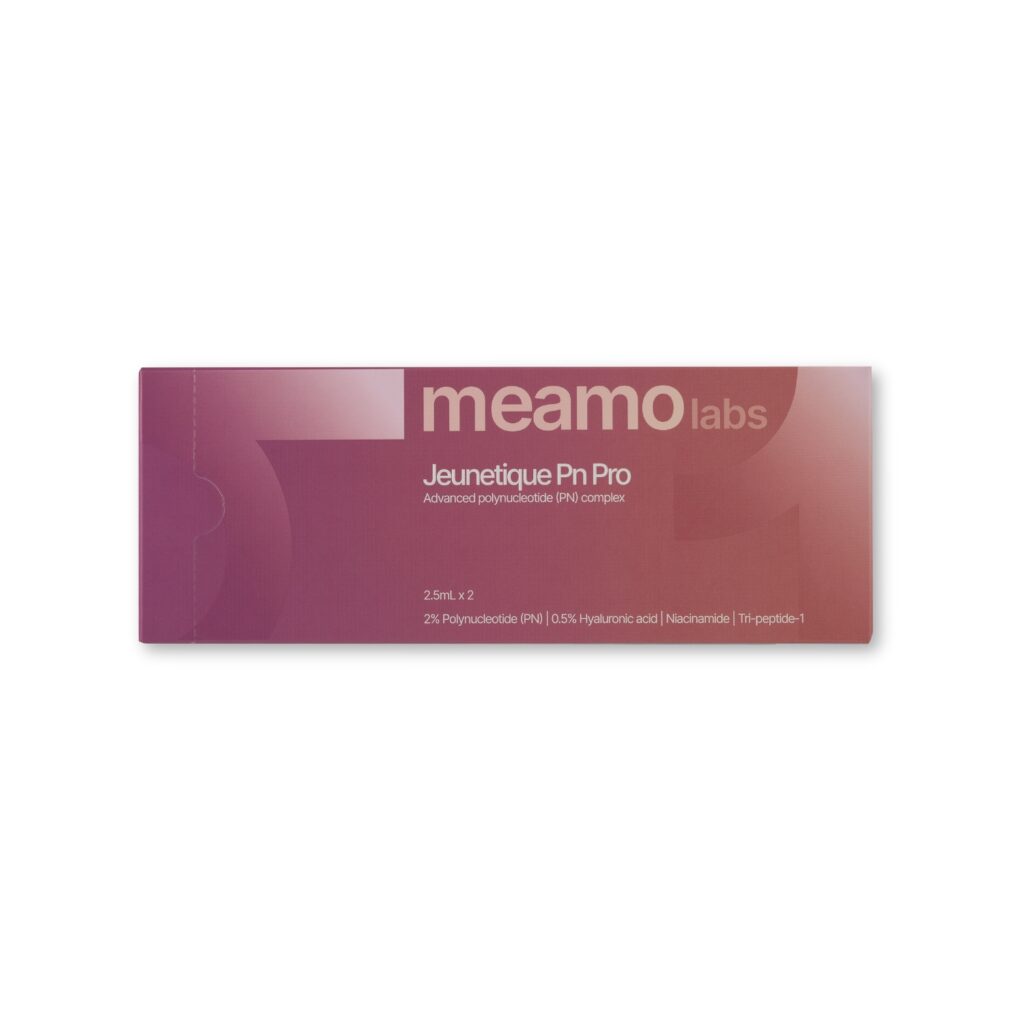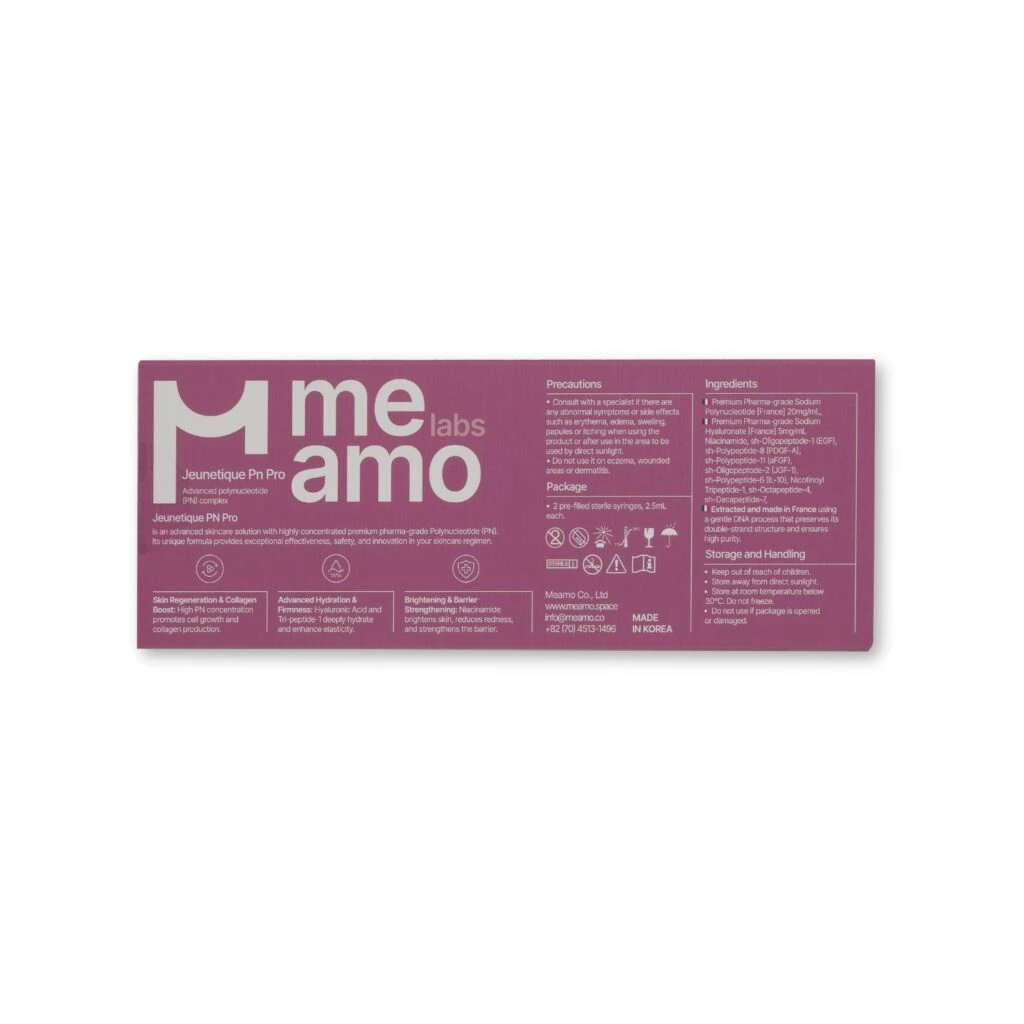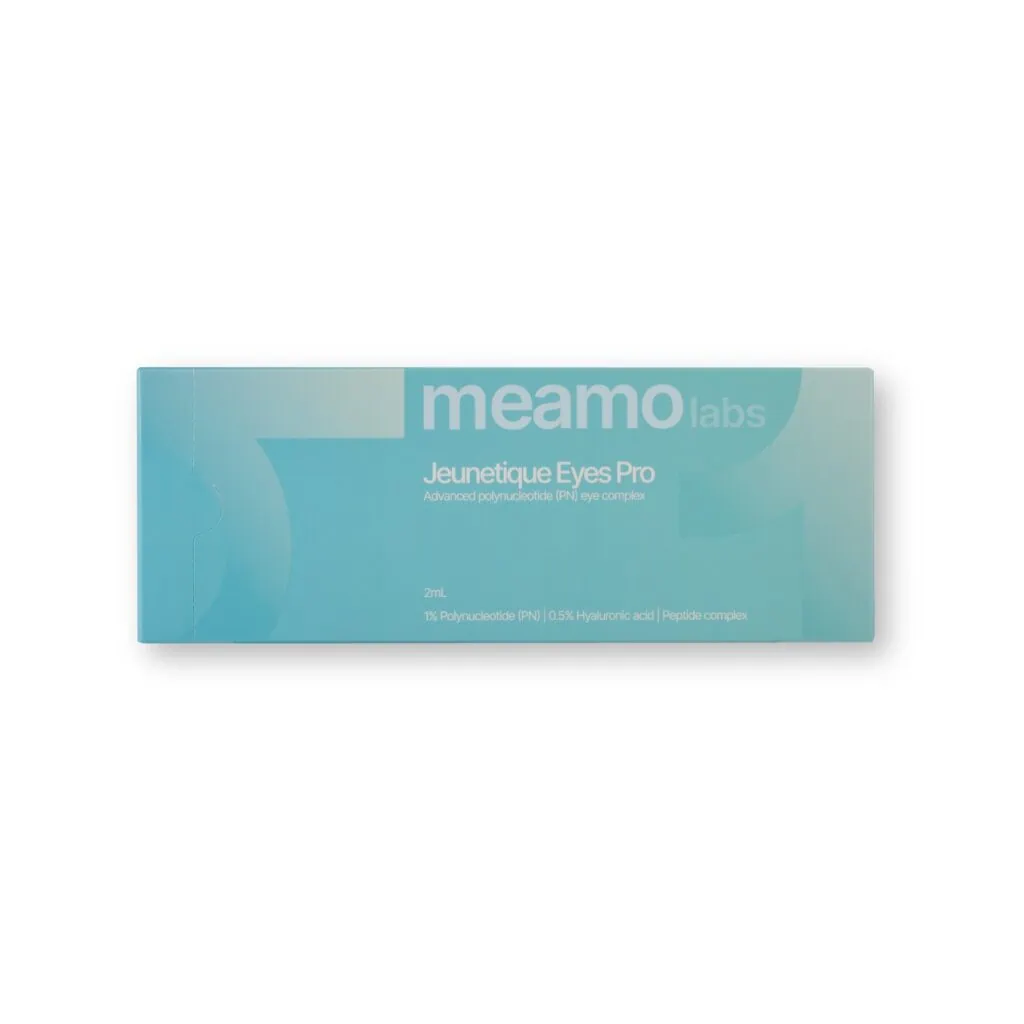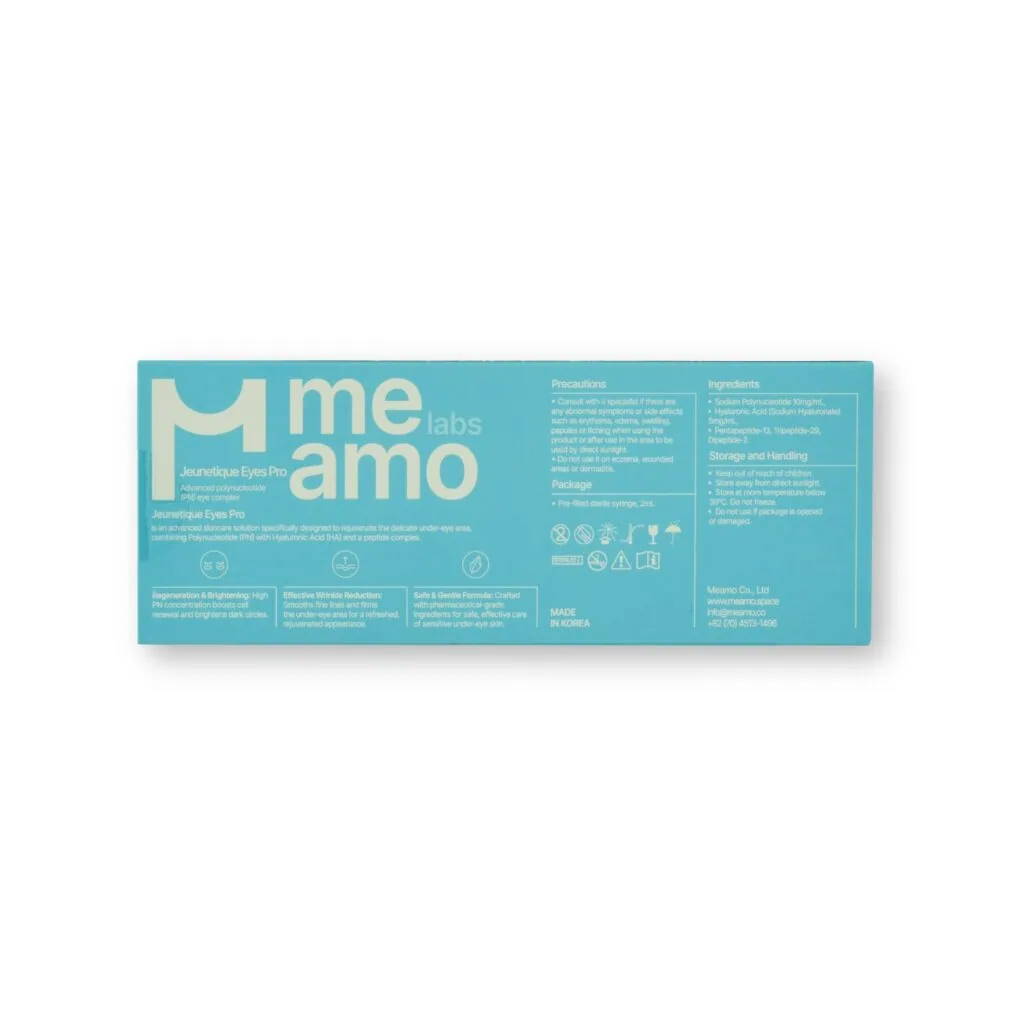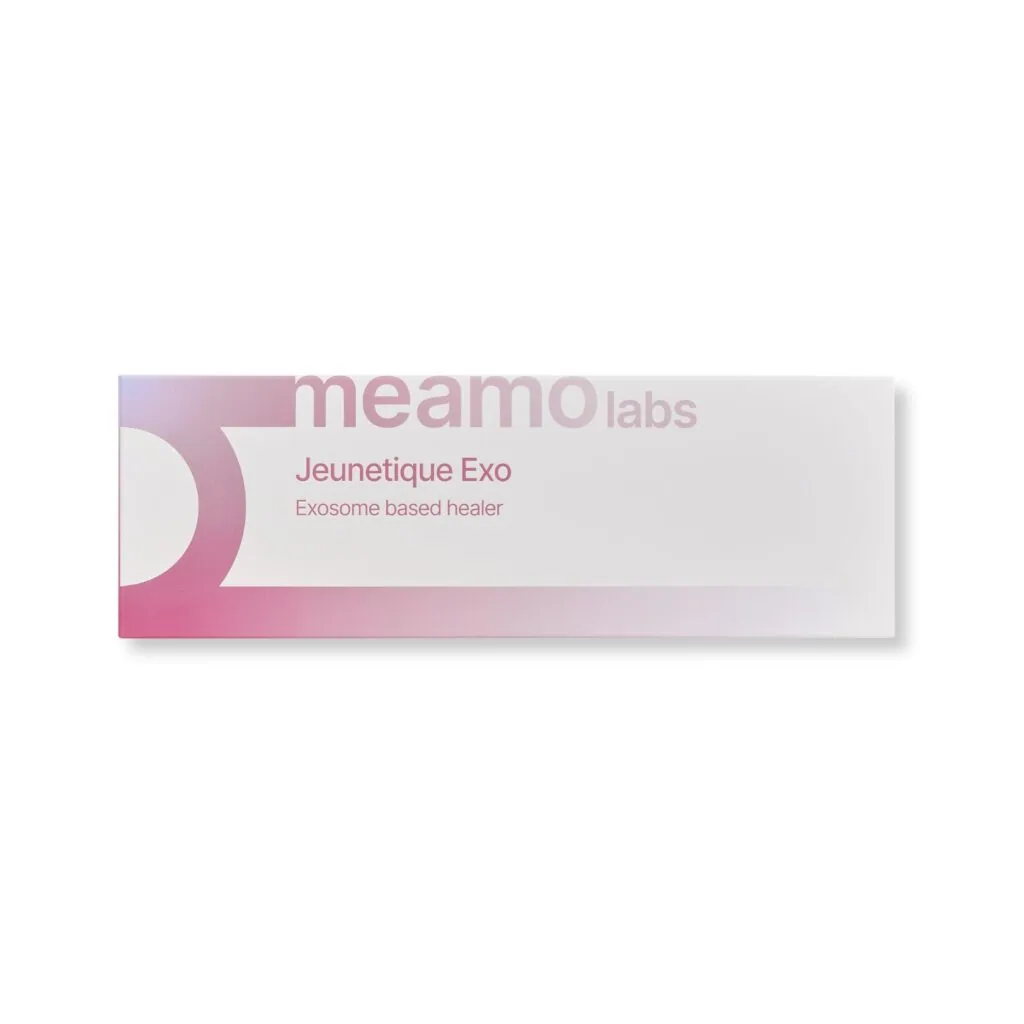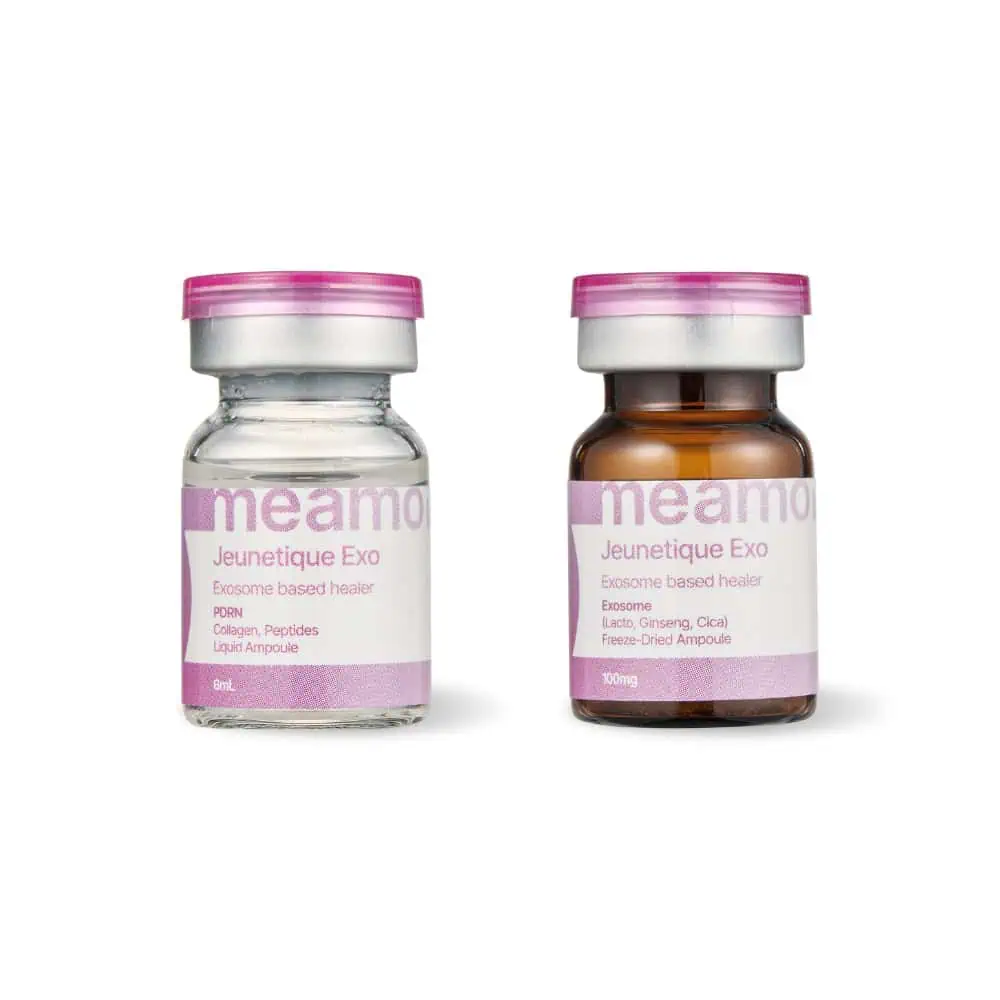Both PN and PDRN are cosmetic products for skin rejuvenation whose active ingredients are nucleic acids. Nucleic acids – DNA and RNA – are the basis of life, genetic material that can affect almost all biochemical processes in our body. Therefore, both PN and PDRN are completely natural products:
- Polynucleotides (PN) are obtained from salmon gonads (sex glands). This is a dense, highly concentrated mixture of various nucleic acids: both DNA and RNA.
- Polydeoxyribonucleotides (PDRN) are obtained directly from the spermatozoa (germ cells) of salmon. PDRN consists of almost pure DNA, without impurities of other biologically active substances.
To put it simply, PDRN is a specific subtype of PN where everything except deoxyribonucleic acid (DNA) has been removed. Therefore, all PDRN is PN, but not all PN is PDRN.
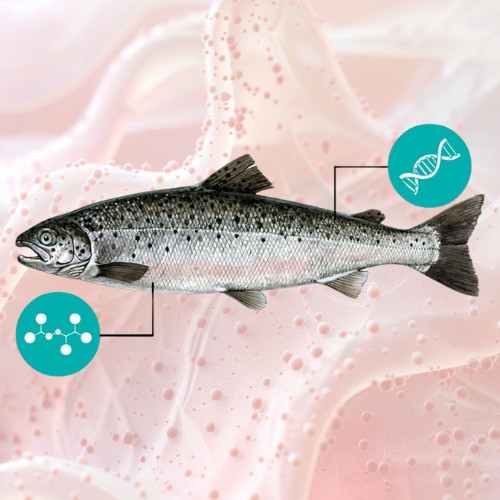
Jeunetique Eyes Pro
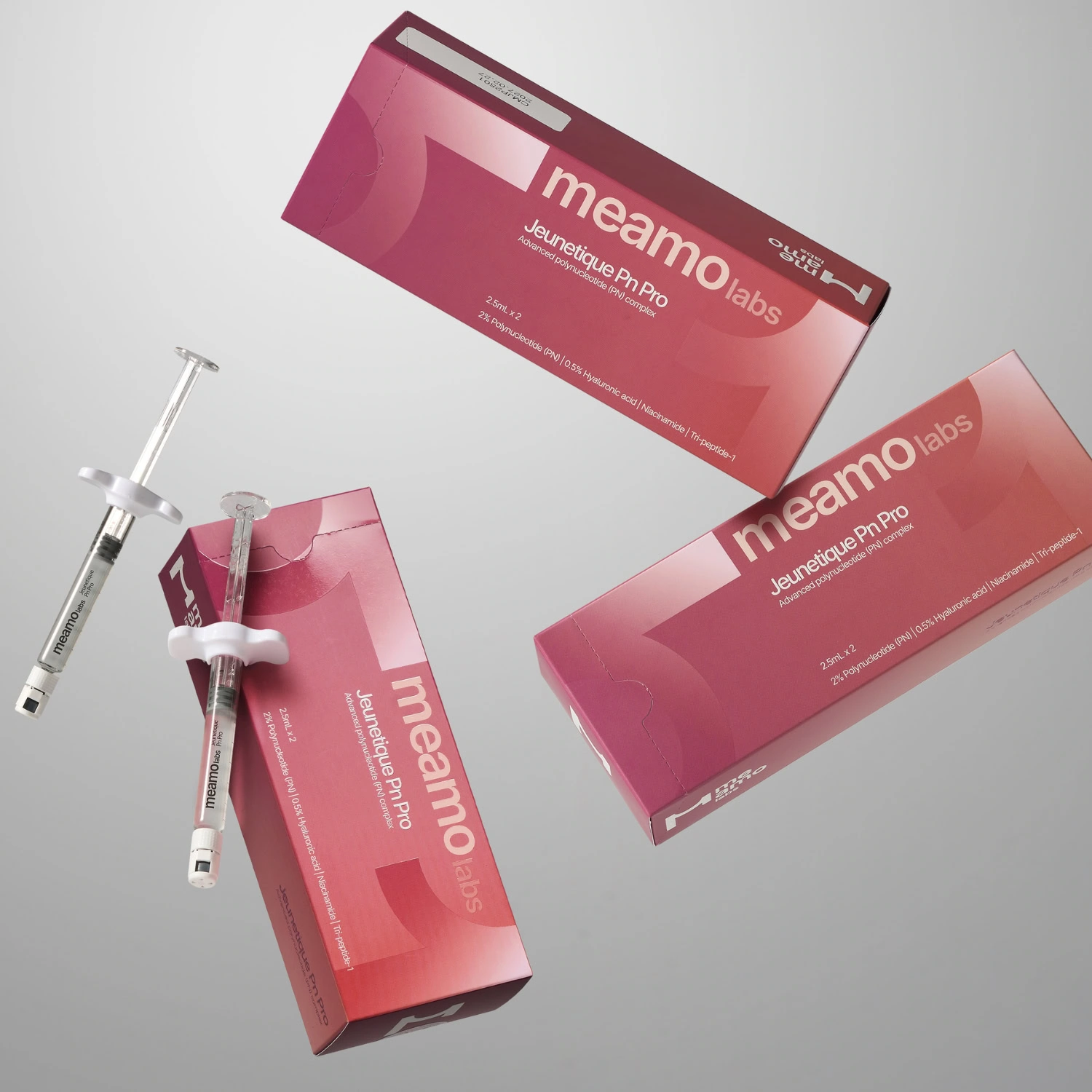
Both of these substances contribute to the renewal and skin rejuvenation, but PDRN is usually used for its healing and recovery after damage, while PN works better as a universal skinbooster and moisturizer.
In addition, PN products are more convenient to combine with other active ingredients that enhance their effect. For example, MEAMO Jeunetique PN Pro is an innovative combined skinbooster for facial skin rejuvenation and hydration. Its effectiveness is based on the double concentration of the main active ingredient – polynucleotides.
Moreover, the rejuvenating properties of Meamo Jeunetique PN Pro are enhanced by the inclusion of hyaluronic acid, an ultrashort peptides and niacinamide – vitamin B3, which is extremely important for the skin.
What Do Scientists Say?
Polynucleotides began to be used in experimental medicine in the 1990s. They were used for wound healing after skin and cornea transplants, and after surgeries on the cervix and joints. During these studies, scientists noted that the introduction of polynucleotides stimulates the activity of fibroblasts –skin cells that produce collagen.
Additionally, they noted polynucleotides’ ability to lighten the skin, increase mitochondrial energy production, and other restorative effects. All this paved the way for the use of polynucleotides in injectable cosmetology.
Skinboosters and collagen stimulators based on polynucleotides appeared in 2014. And even the first studies convincingly proved that these products:
-
reduce the size of skin pores;
-
decrease the thickness of the keratin layer;
-
brighten and even out skin tone;
-
eliminate wrinkles and sagging skin;
-
remove small scars (e.g., post-acne);
-
make large scars less noticeable.

In September 2024, a group of scientists surveyed 407 doctors who specialize in the field of injectable cosmetology. 87.7% of respondents answered that they use products with polynucleotides to address various facial skin issues. Moreover, over 83.8% of surveyed doctors described the use of these products as "highly effective."
General Benefits of PN and PDRN
-
Enhance collagen production.
-
Make the skin firm and smooth.
-
Reduce the severity of existing wrinkles and slow down the appearance of new ones.
-
Stimulate skin healing.
-
Reduce redness and swelling by suppressing inflammation.
-
Lower melanin synthesis, eliminating hyperpigmentation.
-
Make skin scars and marks less noticeable.
All these products have high biocompatibility with human tissues. They can be used even on the most delicate areas.
For example, MEAMO Jeunetique Eyes Pro is an innovative PN-based skinbooster, specifically designed to eliminate dark spots and rejuvenate the undereye area. Its activity is further enhanced by the inclusion of hyaluronic acid and an ultrashort peptide complex.
What are the Differences Between PN and PDRN?
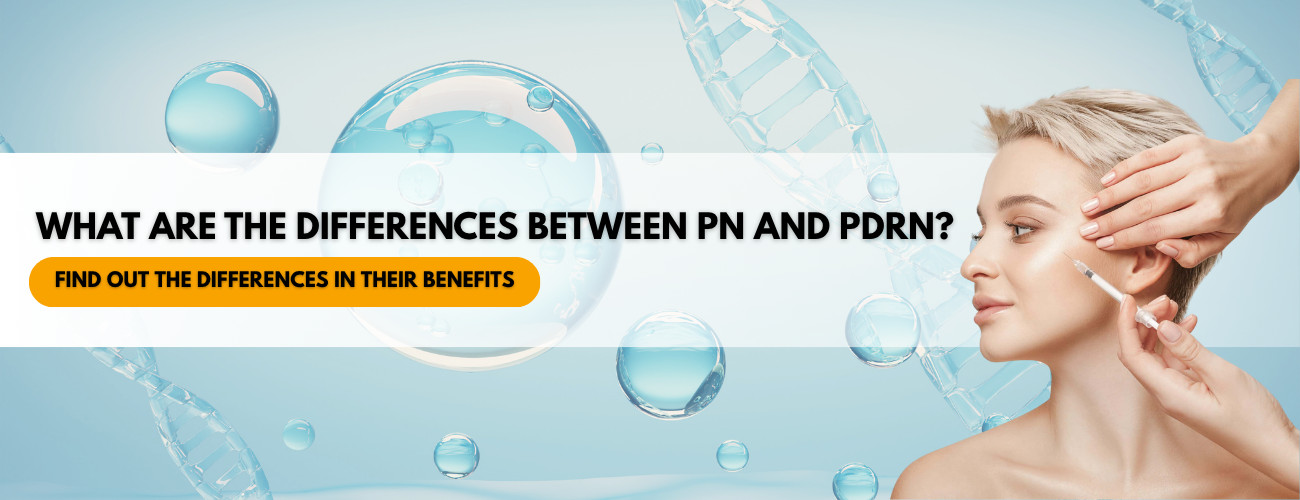
| PN | PDRN |
|---|---|
| Better suited for general skin rejuvenation, can be used to address a variety of cosmetic issues | Better suited for the recovery and damaged skin regeneration, more strongly stimulates cell growth |
| More effectively stimulates collagen synthesis by fibroblasts | More effective for eliminating scars and stretch marks |
| More pronounced anti-inflammatory effect | Better strengthens the natural skin barrier, helping to prevent further damage |
| More intense anti-aging effect and long-term structural support for the skin | More effective at reducing swelling |
| More pronounced rejuvenation results in delicate areas, such as the under-eye area | Gentler effect on very sensitive skin |
| Better at fixing serious skin concerns, such as deep wrinkles | More pronounced antioxidant effect |
| Stronger moisturizing effect | Better stimulates the formation of new blood vessels in the skin |
| Better increases skin elasticity and smoothness | |
| More effectively evens out skin tone |
What is Better to Choose: PDRN or PN?
To determine what is better for you – PN or PDRN – you should focus on the specific skin problems you want to solve.
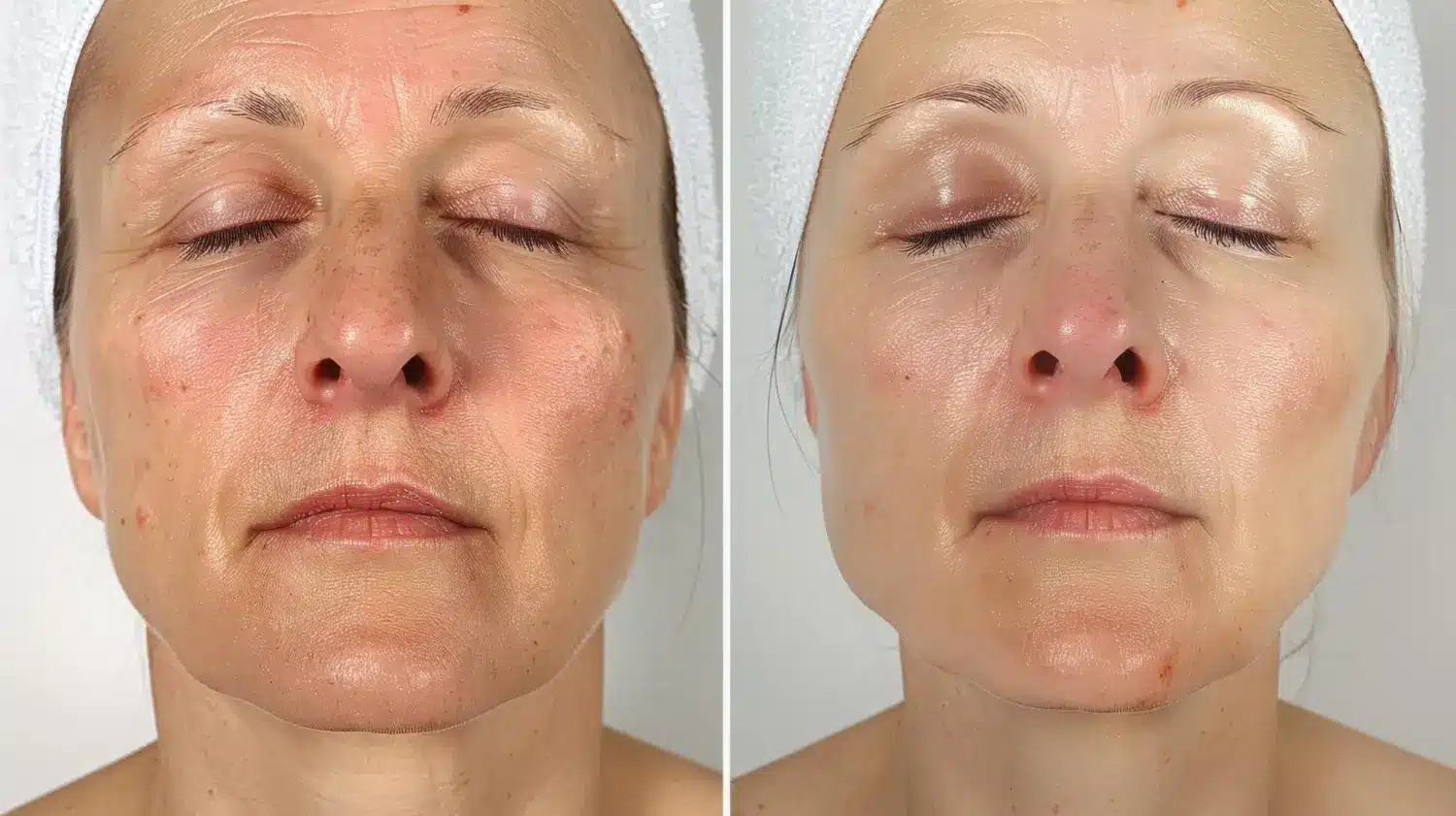
Products with polynucleotides (PN) are recommended if you need to:
- Rejuvenate skin showing moderate to high signs of aging.
- Make moderate or pronounced wrinkles on the face less noticeable.
- Tighten sagging skin or drooping skin folds.
- Get a long-lasting and intense anti-aging effect.
- Improve the appearance of skin in delicate zones, for example, under the eyes.
Products with polydeoxyribonucleotides (PDRN) will be better if you want to:
- Eliminate mild or early signs of skin aging.
- Remove small scars and damage, such as postacne marks.
- Make large scars less noticeable.
- Improve the condition of sensitive skin prone to redness or irritation.
- Enhance the effect of other anti-aging procedures.
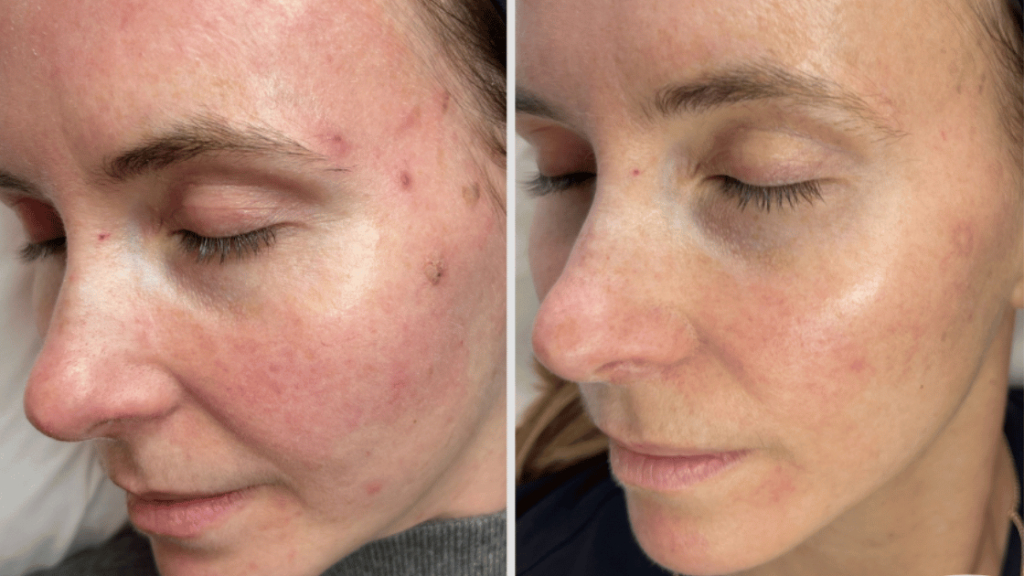
Core Takeaway
PDRN and PN-based products both offer excellent rejuvenating effects. But at the same time, they have their own differences and characteristics. Therefore, there is no “best” option that would be universal for 100% of patients.
You should choose the product most suitable for you only after consulting with an experienced cosmetologist who can identify all your skin problems and prescribe the optimal treatment.
Scientific literature used:
- Khan, A., Wang, G., Zhou, F., Gong, L., Zhang, J., Qi, L., & Cui, H. (2022). Polydeoxyribonucleotide: a promising skin anti-aging agent. Chinese Journal of Plastic and Reconstructive Surgery, 4(4), 187-193.
- Yi KH, Winayanuwattikun W, Kim SY, et al. Skinboosters: Definitions and varied classifications. Skin Res Technol. 2024;30(3):e13627.
- Kim TH, Heo SY, Oh GW, Heo SJ, Jung WK. Applications of Marine Organism-Derived Polydeoxyribonucleotide: Its Potential in Biomedical Engineering. Mar Drugs. 2021;19(6):296. Published 2021 May 22.
- Lee D, Choi H, Yoo K, et al. Assessment of current practices and perceived effectiveness of injectable polynucleotide for enlarged facial pores among cosmetic physicians: A survey-based evaluation. Skin Res Technol. 2024;30(9):e13738.
- Galeano M, Pallio G, Irrera N, Mannino F, Bitto A, Altavilla D, Vaccaro M, Squadrito G, Arcoraci V, Colonna MR, et al. Polydeoxyribonucleotide: A Promising Biological Platform to Accelerate Impaired Skin Wound Healing. Pharmaceuticals. 2021; 14(11):1103.
- Lee D, Kim MJ, Park HJ, et al. Current practices and perceived effectiveness of polynucleotides for treatment of facial erythema by cosmetic physicians. Skin Res Technol. 2023;29(9):e13466.
